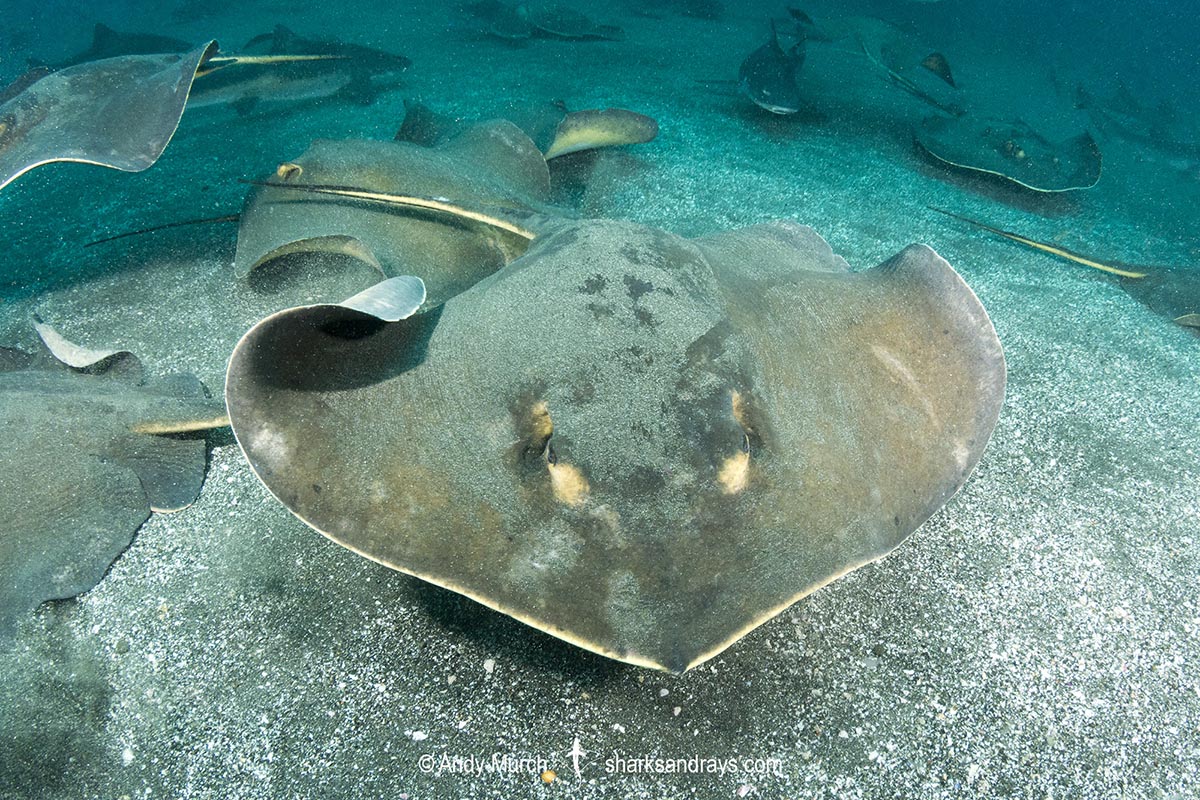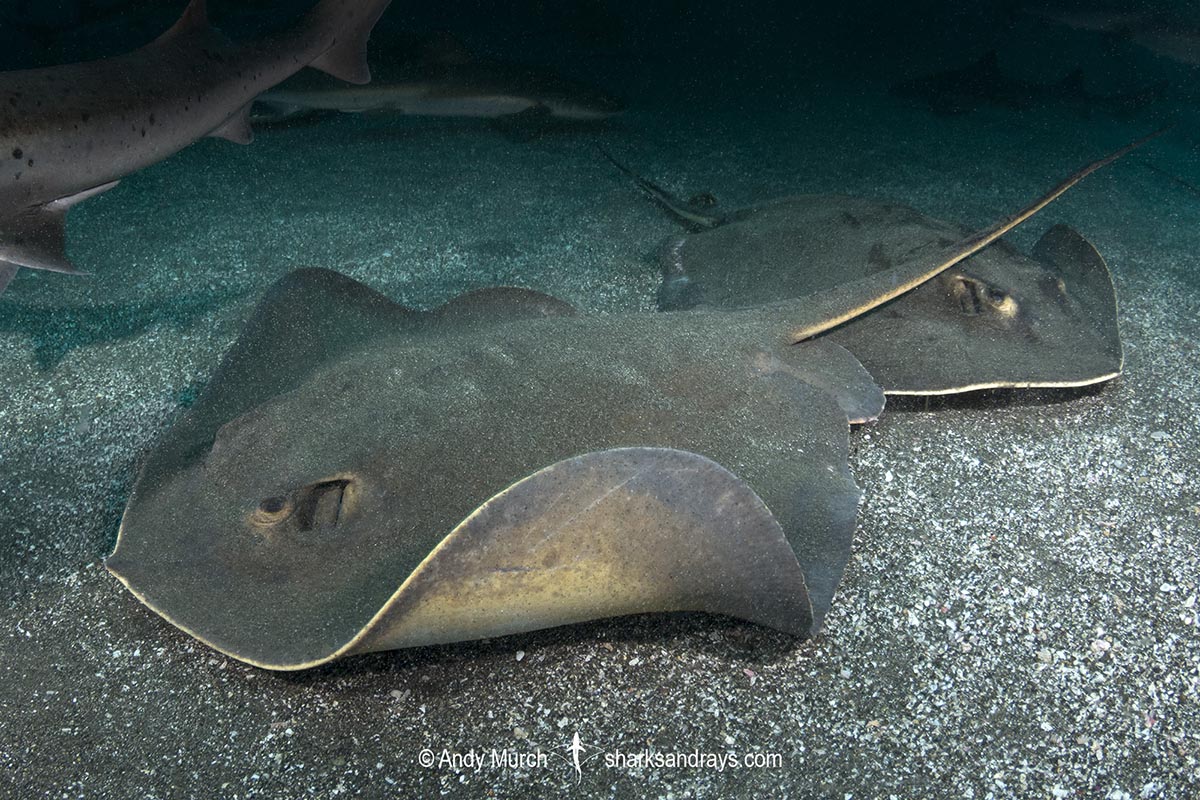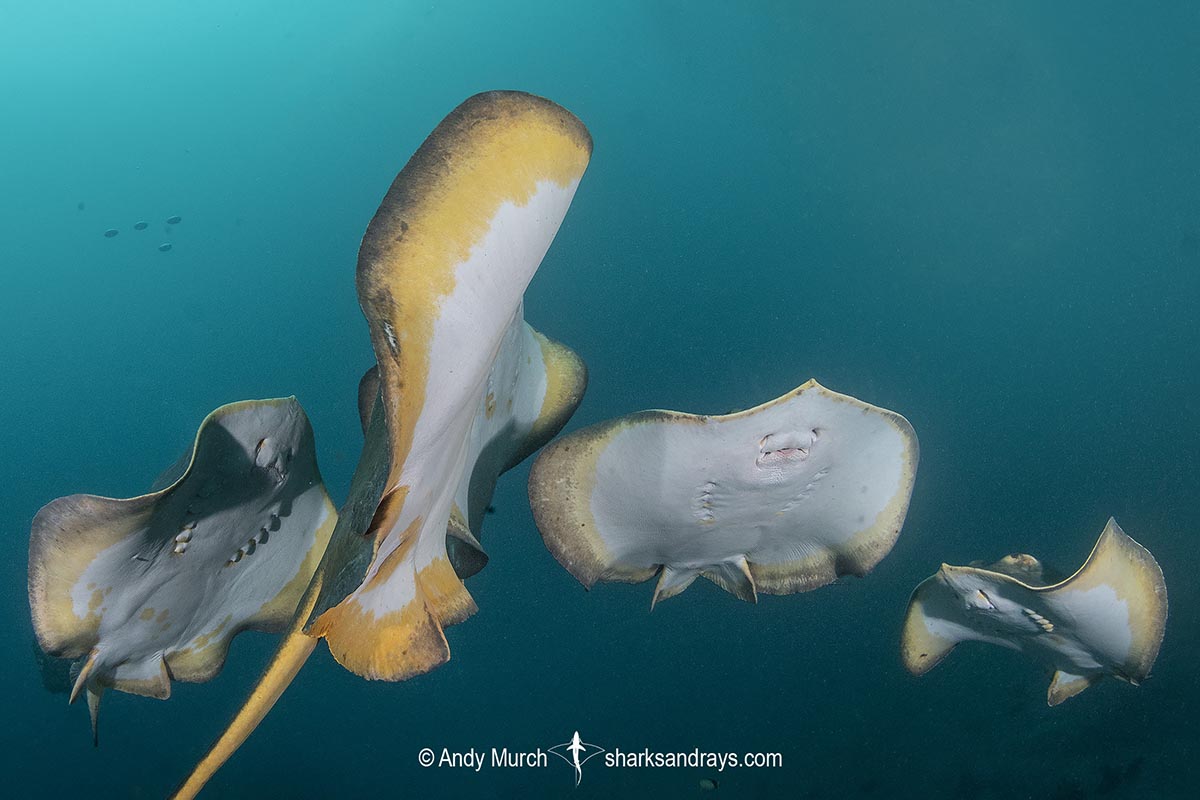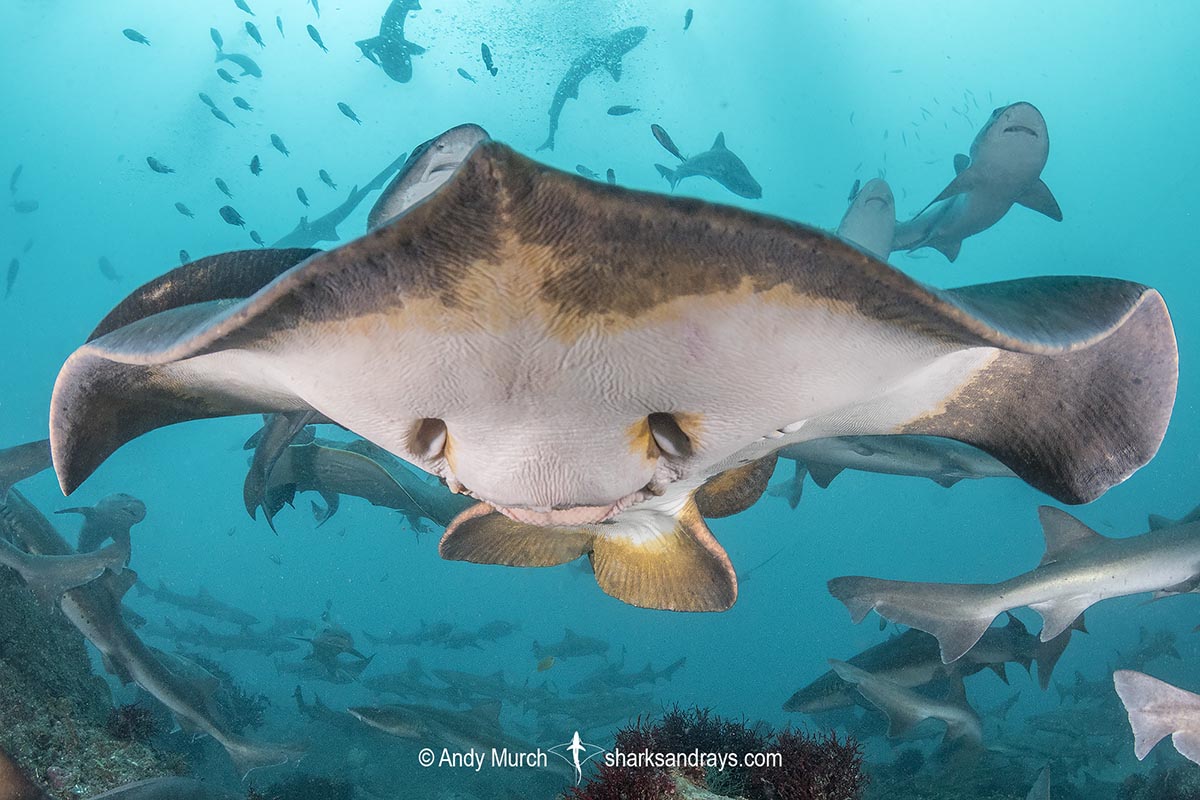Common name(s)
Red Stingray.
Binomial
Hemitrygon akajei.
Synonyms
Identification
A medium sized stingray with a relatively thick body and a kite-shaped disc that is slightly wider than long; disc width approximately 1.1-1.2 x length. Snout obtusely angular with a small protruding tip. Anterior margins of disc almost straight. Pectoral fin apexes broadly rounded. Pelvic fins fairly long with narrowly rounded apexes.
Eyes small. Snout length 1.8-2.3 x combined eye and spiracle length.
Mouth contains 3-7 oral papillae. Deep labial furrows around mouth. Lower jaw concave at symphysis. Short, wide, skirt shaped nasal curtain with a weakly fringed margin. Nostrils narrowly oval shaped.
Adults usually have a few spear-shaped thorns on tail anterior to tail sting. Occasionally small thorns present along median of disc. Thorns absent in juveniles. V-shaped patch of dermal denticles on head. Tail somewhat depressed at base, tapering to tail sting, then filamentous to tip. Tail length (when intact) less than 1-1-1.6x disc width. Ventral finfold short; about .3x disc width. Dorsal finfold just a ridge. Ventral finfold development varies; base length 39-58% of disc width. One tail sting usually present.
Colour
Dorsum reddish brown to dark brown with yellowish patches below eye and on posterior margin of spiracle. Ventrum white with a wide, irregular, bright yellow or brown margin. Dorsal surface of tail brown; darkening to tip. Sides of tail yellow. Ventral surface of tail and fin folds dusky anteriorly fading to black towards the tip.
Size
Maximum disc width 66cm. Disc width at birth unknown.
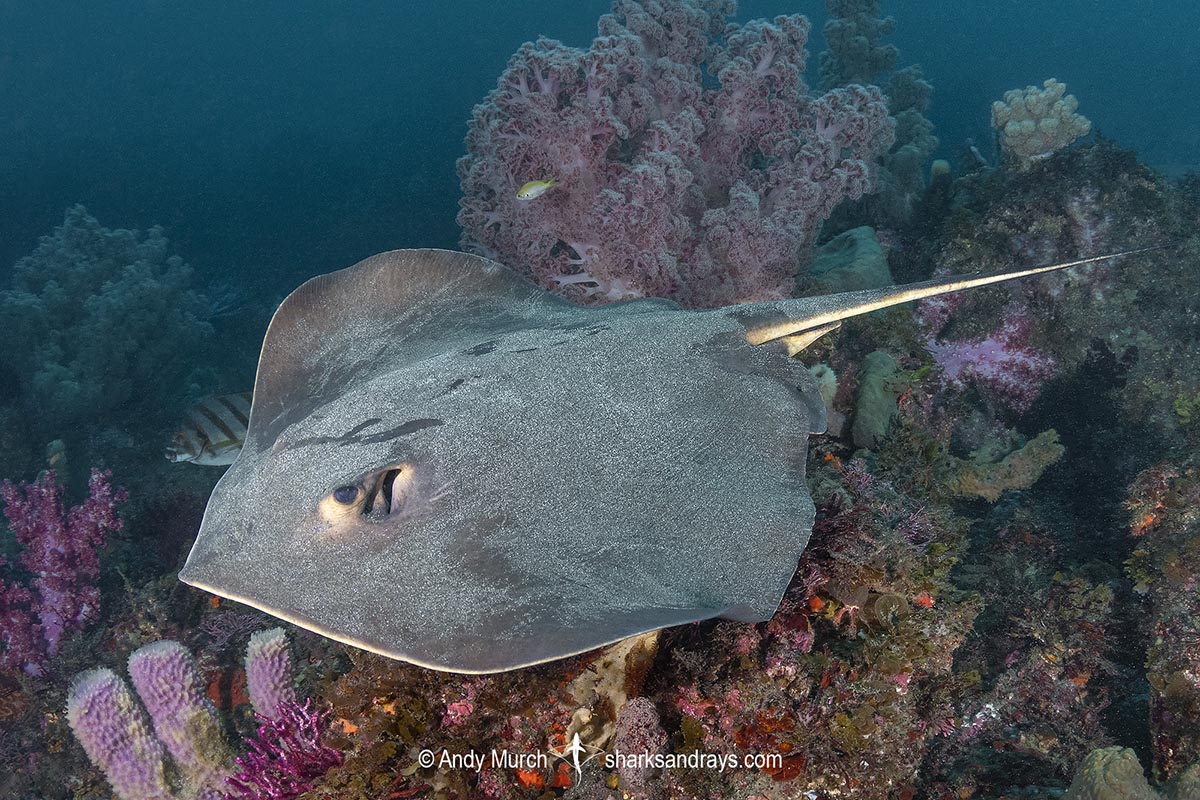
Conservation Status
NEAR THREATENED
In Japan, Hemitrygon akajei is a targeted species and a common bycatch in trawl, set net, gillnet, and longline fisheries. Although it is abundant in South Korea and still relatively common in Japan and China, catch statistics indicate that it has declined by 65% in Taiwan in the last 36 years.

Habitat
Warm temperate / sub-tropical seas. On soft substrates, sometimes adjacent to reefs. From shallow bays to at least 50m. Known to enter brackish environments.
Distribution
Northwest Pacific Ocean. Common around the coast of Honshu, Japan. Also found from central China to Taiwan.
Observations from the Philippines may be misidentifications.
Reproduction
Matrotrophic aplacental viviparity. 1 pup per litter.
Diet
Diet consists mostly of crustaceans and small benthic fishes, and occasionally annelid worms.
Behavior
Sedentary. Spends much of the day resting on the substrate.
Reaction to divers
Normally shy unless habituated. Habituated animals will take food by hand.
Diving logistics
Red stingrays are occasionally encountered throughout much of Japan but they are abundant and very easily approached during baited shark dives in Chiba; on the southeast coast of Honshu. Big Fish Expeditions runs yearly Japanese Shark Diving trips where hundreds of these rays are always seen.
What’s new
View our full list of updates
Similar species
Izu Stingray Distinguished by shorter, more rounded snout and lack of thorns on disc.
Bennett’s Stingray Distinguished by larger head, narrower disc and longer tail; greater than 2x disc width.



